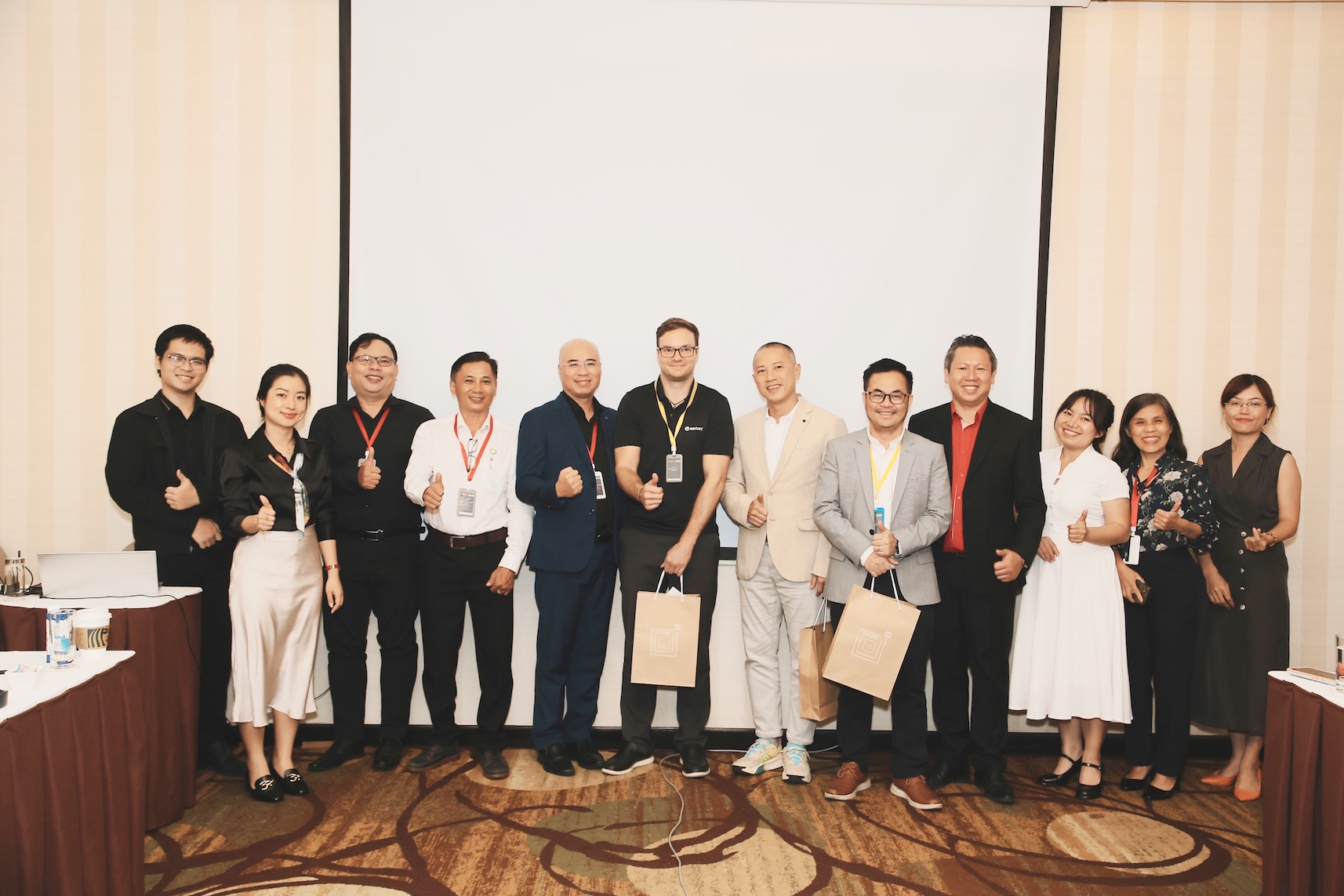As Vietnam seeks to align with global ESG (Environmental, Social, Governance) standards, its industrial base stands at a challenging crossroads. One path is to gradually retrofit existing zones to meet green benchmarks; the other is to incur higher upfront investment costs to position themselves as eco-industrial parks (EIPs) from the outset.
How to achieve dual transformation toward eco-industrial parks was the central question at the ESG Forum 2025, held in District 1, HCMC, on June 25 by The Saigon Times in collaboration with Green Transition Consulting & Training.
Growing market demands
The United States, the European Union, and China have long been Vietnam’s three largest export markets, with market shares of around 30%, 12-15%, and 10-15%, respectively. “Whether near or far, these markets are now equally demanding,” said Pham Thi Ngoc Thuy, director at the Office of the Research and Development Board for the Private Economic Sector (Board IV).
With the start of the Trump 2.0 administration, ESG policies were rolled back at the federal level. Nevertheless, as the director of Board IV pointed out at the forum, several U.S. states have chosen to follow their own paths, staying aligned with global sustainability trends.
Colorado has enacted a law requiring corporations with annual revenues of US$1 billion or more to disclose their Scope 1 and Scope 2 emissions beginning in 2028, followed by Scope 3 emissions starting in 2029. The regulation is expected to have far-reaching impacts across entire supply chains. Meanwhile, New York has adopted climate policies and greenhouse gas regulations modeled after California’s, including strict reporting deadlines and substantial penalties for non-compliance.
The EU remains steadfast in its commitment to sustainable development, but has opted for a more streamlined implementation and extended its deadlines to 2028-2029. Key changes include narrowing the scope of companies subject to reporting, eliminating some sector-specific standards, reducing audit requirements, and extending the ESG risk assessment cycle from annually to once every five years. According to Thuy, this adjustment offers a “golden window” for Vietnamese enterprises to reinforce their internal ESG frameworks – not just to meet compliance, but to embed sustainability into their core operations.
Meanwhile, China is projected to reach its carbon emissions peak by 2030 and achieve carbon neutrality by 2060 – a timeline roughly ten years behind that of the frontrunners. As Vietnam’s largest and nearest export market, China is also “moving quickly,” with notable shifts already underway in its sustainability agenda.
This country officially launched its national carbon emissions trading system (ETS) in July 2021, making it the largest of its kind globally, aimed at cutting emissions through market-based mechanisms. In March 2025, China’s Ministry of Ecology and Environment announced plans to expand the ETS’s coverage from 40% to 60% of the country’s total emissions, estimated at nearly 80 billion tons of carbon dioxide equivalent (CO2e), and to extend the system’s scope to include enterprises emitting 26,000 tons of CO2e or more per year.
According to Compliance & Risks and Ethics & Compliance Switzerland, China’s Ministry of Finance will require companies to begin basic sustainability disclosures starting in 2027, with full disclosures mandated by 2030. The country’s three major stock exchanges – Shanghai, Shenzhen, and Beijing – have already set rules requiring listed companies under the mandate to submit their first sustainability reports for the 2025 fiscal year by April 30, 2026.
This marks a significant shift, as a market long perceived by many Vietnamese businesses as relatively “easygoing” is now becoming just as demanding as the U.S. and EU when it comes to sustainability standards.
Investing for the long haul
According to the director of Board IV, around 40-50% of localities in Vietnam are seeking to convert existing industrial zones into eco-industrial parks, while 8-10% aim to develop eco-industrial parks from the outset.
Nguyen Trung Kien, director of VILANDCO and member of the BOD, Vietnam Green Building Council, pointed out that resource efficiency and shared infrastructure usage in Vietnam’s industrial parks remain low, largely due to several critical shortcomings. These include a lack of supportive policies and incentives for inter-business collaboration, weak coordination in energy and waste management, limited integration between industrial zones and surrounding urban or residential areas, and the absence of green financing mechanisms.
Established in 1996, Hiep Phuoc Industrial Park is in the process of transitioning into an eco-industrial zone. According to Giang Ngoc Phuong, deputy managing director of Hiep Phuoc Industrial Park JSC, more than 31% of the park’s total area is dedicated to infrastructure, significantly higher than that of most other industrial zones. The facilities include a wastewater treatment plant, transportation and drainage systems, as well as cultural and sports centers, kindergartens, and vocational schools.
Hiep Phuoc was selected as a pilot site for Phase 1 (2020-2024) of the project “Eco-Industrial Park Implementation in Vietnam under the Global Eco-Industrial Parks Program.” Initiatives under the program include water, electricity, and fossil fuel savings. A mid-term review shows that Hiep Phuoc’s compliance with the international eco-industrial park framework increased from 44% in 2020 to 76% by the end of 2023, potentially reaching 88% in the coming years.
Implementing green building standards can increase the upfront cost of developing eco-industrial parks by at least 10% compared to conventional projects. However, Tran Tan Sy, deputy general director, Industrial Parks & Logistics, KN Holdings, argued that these parks offer long-term value by reducing operating and business expenses by 2–3% annually, ultimately helping enterprises maximize profitability. He sees this as a forward-looking strategy for both industrial park developers and the companies operating within them.
From a long-term perspective, speakers and representatives of industrial zones attending the forum shared Sy’s view that “the sooner eco-industrial parks are implemented, the greater the competitive edge.” Nguyen Cong Minh Bao, co-founder of Green Transition Consulting & Training, added that momentum for eco-industrial parks is growing, fueled by the broader green transition movement and more efficient governance in provinces undergoing administrative mergers.
However, according to Thuy of Board IV, a significant barrier remains: 64% of Vietnamese enterprises report having made no preparations for the green transition. As of now, only 3.7% have conducted greenhouse gas inventories, and just 6.9% have set and disclosed emission reduction targets for the short, medium, and long terms.
Not just within industrial parks
Vietnam currently has over 77 million motorbikes and around seven million cars and trucks. In HCMC alone, there are around 7.4 million motorbikes, which account for an estimated 60-70% of the city’s emissions. The share of electric vehicles remains below 10%.
Following its merger with Binh Duong and Ba Ria-Vung Tau, HCMC is set to become a mega-urban area, with its total land area tripling to over 6,700 square kilometers and a population exceeding 14 million. As a result, traffic volume is expected to rise sharply.
“Transitioning to electric vehicles represents the most concrete step toward sustainable transportation for this emerging megacity. It promises cleaner air, less noise, and a better quality of life for residents. But the path forward is anything but simple,” said Stefan Kaufmann, founder and CEO of EBOOST, a HCMC-based startup specializing in smart charging solutions and infrastructure for electric vehicles in Vietnam.
Kaufmann noted that eco-industrial parks will serve as a foundation for driving the green transition in transportation, as they are directly connected to residential areas via road networks. Charging stations, he added, will increasingly be located in public spaces, industrial zone parking areas, and factory premises to accommodate a wide range of vehicles, from motorbikes and cars to trucks and other renewable energy-powered transport.
Tran Viet Huy, managing director of TRASAS and head of the Customs and Trade Facilitation Department, Vietnam Logistics Business Association (VLA), sees eco-industrial parks as a key catalyst for advancing green logistics in Vietnam. In 2022, the country’s logistics market was valued at US$73 billion, representing 20% of its GDP.
Le Hoang Anh, founder and CEO of Eco-Truck, believes that green industrial parks offer an ideal ecosystem for tech startups like his. Eco-Truck specializes in B2B transport services and also provides a platform for related offerings such as fuel and lubricant supply, tire services, insurance, and payment solutions.









